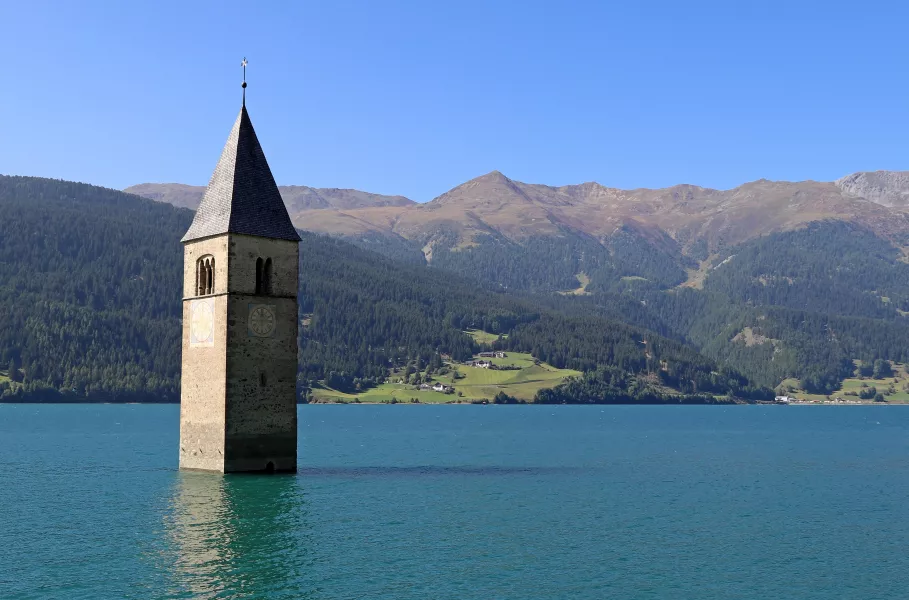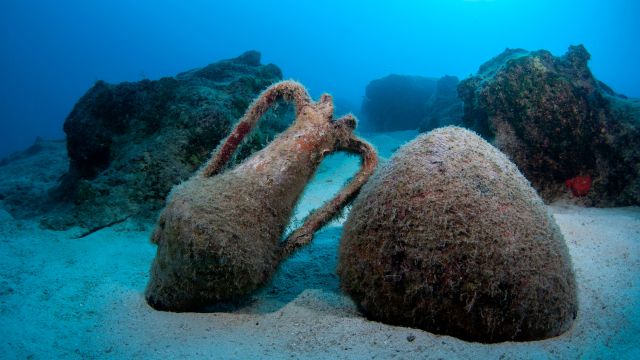But you needn’t rely on your imagination for the mysteries of the deep, because there’s enough reality beneath the waves to boggle most minds. These submerged settlements aren’t Atlantis, but they might as well be…
Once nicknamed “the Sodom of the New World”, Port Royal was as close as there has ever been to a genuine pirate city. Awash with privateers and prostitutes – and an infamously potent strain of rum – the city’s reputation for wickedness was known throughout the Caribbean, and notorious buccaneer Henry Morgan called Port Royal his home.
The debauchery continued unchecked until 1692, when, as if by divine justice, an earthquake levelled the city, plunging its brothels and taverns beneath the waves. Today Port Royal is one of the world’s most important underwater sites, and the ruins have sat undisturbed for centuries beneath the sea.
Another famous den of hedonism, Baia was a playground for urban aristocrats in ancient Roman times. The city was described by philosopher Seneca as “a harbour of vice”, and entertained its clientele with free-flowing alcohol, limitless beach parties, and venues devoted to ‘earthly pleasures’, all with the understanding that the scandal would never reach Rome.
Eventually the city went the same way as Port Royal, though its fate was much less abrupt. Volcanic activity deep below ground saw the lower part of the city sink into the sea, and today divers can peruse crumbling columns, intricate statues, and elegant mosaics.

Reschensee differs from our other entrants in two important ways – first, it was submerged deliberately, and second, it’s around 200 kilometres inland.
Known as the Atlantis of the Mountains, the Italian village of Reschen was flooded in 1950 to unify three lakes behind a large dam, despite the protestations of residents. Today only the church steeple remains, proudly protruding from the water like it was the most normal thing in the world. In winter the lake freezes over, and visitors can walk right up to the spire.
The lost Egyptian city of Heracleion 😍 pic.twitter.com/5oPp2JLQzt
Advertisement— Nicolas 🇱🇧 (@NicolasRahhal) June 27, 2020
Once one of the gems of civilisation, complete with a library said to contain hundreds of thousands of scrolls, the city founded by Alexander the Great remains one of the largest in North Africa, but its archaeological treasures were long thought lost to time.
In the last few decades wet-suited researchers have proved otherwise by meticulously probing the harbour floor. Since mapping began in the early-Nineties scientists have tagged dozens of columns, more than 30 sphinxes and five obelisks, as well as the submerged sister city of Heracleion. Best of all, French marine archaeologist Franck Goddio discovered a submerged palace with marble floors, which may well once have housed Cleopatra.
Pavlopetri is not among the world’s most visually impressive sites, but that’s because it’s very, very… old. Dating back 5,000 years, this Mycenaean, Minoan, and late Bronze Age settlement is thought to have decayed beneath the waves since around 1000BC, and was only rediscovered in 1967.
Though heavily eroded, the town layout is exactly as it was, and researchers are using it as a guinea pig for 3D modelling techniques that should yield a digital reconstruction.







